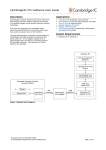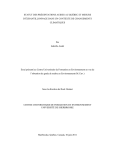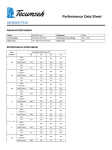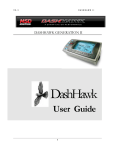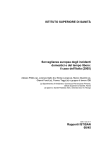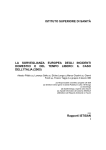Download Cam Spray 4000QE Instruction manual
Transcript
OPERATORS MANUAL Images, from left, illustrate SH, QE & 1450SH-style pressure washers. Model 1450SHDE 1000SHDE 1000QE 1500SHDE 1500QE 20005SHDE 2000SHDE 2000QE 3000SHDE 3000QE 2000TRDE 3000TRDE 4000QE PSI 1450 1000 1000 1500 1500 2000 2000 2000 3000 3000 2000 3000 4000 GPM 2.0 3.0 3.0 3.0 3.0 3.0 4.0 4.0 4.0 4.0 4.0 4.0 4.0 Horsepower Fuel type 2.0 Elec For all: 2.0 Elec 2.0 Elec No. 1 3.0 Elec diesel, 3.0 Elec 5.0 elec No. 2 5.0 Elec diesel, 5.0 Elec 7.5 Elec or 7.5 Elec 5.0 Elec kerosene 7.5 Elec 10.0 Elec Volts/Amps 120/20 120/20 120/20 220/20 220/20 220/20 220/25 220/25 220/34 220/34 220/25 220/34 220/41 Weight (lbs) 350 350 350 350 350 360 570 525 600 550 670 600 575 Cam Spray Hot Water Models Electric-powered, diesel-fired hot water power washers Cam Spray 520 Brooks Road Iowa Falls, IA 50126 toll free: 1.800.648.6007 direct: 1.641.648.5011 fax: 1.641.648.5013 e-mail: [email protected] 1 Thank you Thank you for selecting our products. Our personnel have proudly made every effort to ensure that your new pressure washer is of the quality you expect. But things do occasionally go wrong. This is why every pressure washer is covered by a limited warranty. Among other things, this warranty provides for the replacement of parts found to be defective during the operation of your new pressure washer. Please note that the owner/operator has certain obligations under the terms of the warranty. Be sure to read this manual for directions on proper installation, start-up, use, and storage of your pressure washer. Your new pressure washer was tested after production for proper pressure and flow. Please note that this process will sometimes leave a water residue in the pump. The dealer you have purchased your new machine from should review with you the proper installation, start-up, use, and storage. Most ‘big’ problems occur when shortcuts are taken in one of these processes. If a problem occurs that you need some assistance with, please feel free to contact us at the listing below: Warranty Service Center 520 Brooks Road Iowa Falls, IA 50126 1.800.648.6007 Please make note of Model Identification Model # Code # Serial # Always have this information when calling Warranty Service Center. Be familiar with the model plate located on your machine. Have the model and code number with you when you call for service. (Located on engine). Engine exhaust from this product contains chemicals known to the State of California to cause cancer, birth defects, or other reproductive harm. 2 Statement of Warranty The manufacturer of this product agrees to repair or replace designated parts that prove defective within the warranty period listed in the chart below. Specific limitations and exclusions apply. This warranty covers defects in material and workmanship and not failure due to normal wear, depreciation, abuse, accidental damage, negligence, improper use, maintenance or storage. To make claim under the terms of the warranty, all parts said to be defective must be returned to a designated Warranty Service Center for warranty inspection. The judgments and decisions of the factory-authorized personnel concerning the validity of warranty claims are final. Many components are covered by warranties given by their respective manufacturers. These warranties pass through to the end user. As a factory authorized and trained warranty service center the factory will honor the terms of all component warranties and satisfy claims of the appropriate warranty provisions. Normal wear items include but are not limited to: hoses, nozzles, filter, valves, seals and are not covered by this warranty. This warranty is in lieu of all other warranties, express or implied, including without limitation any warranties of merchantability or fitness for a particular purpose and all such warranties are hereby disclaimed and excluded by the Manufacturer. The Manufacturer's warranty obligation is limited to repair and replacement of defective products as provided herein and the Manufacturer shall not be liable for any further loss, damages or expenses, including damages from shipping, accident, abuse, acts of God, misuse or neglect. Neither is damage from repairs using parts not purchased from the Manufacturer or alterations performed by non-factory authorized personnel. Failure to install and operate equipment according to the guidelines put forth in the instruction manual shall void warranty. Manufacturer AR Pump Cat Pump General Pump Udor Pumps Briggs and Stratton Warranty Period and Details 2 year 1 year on Pump/Motor units 5 year on 2SF and 4SF models 2 year on 5DX models 5 year on pumps Lifetime on brass manifold against freezing 1 year on the aluminum manifold 1 year on Pump/Motor units 5 year Robin Engines 1 year on standard engines 2 year on Intek and Vanguard products 1 year 2 year on GX series Engines 2 year on GC products for personal use 90 days on GC products in commercial use 2 year Baldor Electric Motors Leeson Electric Motors 1 year from date of purchase 1 year from date of purchase Burners 1 Year from date of purchase Hot Water Coils 5 year from date of purchase Machine Frame 1 year from date of purchase Hatz Diesel Engines Honda Engines Accessories:Includes tips, guns, wands, hoses, injectors, unloaders, sandblasters, flat surface cleaners, hose reels, turbo nozzles, drain nozzles, brushes, foamers, GFCI units, thermal relief, filters, tanks, etc. 90 days WARNING The following warnings must be followed. Failure to follow these warnings could result in serious personal injury or death! Never allow children or untrained personnel to operate machinery. Gun kicks back--hold with both hands. Electrical equipment can cause shock and sparks. Do not bypass or remove the grounding prong in any electrical plug. Keep electrical plugs, connections, and cords out of water and moisture. Disconnect from power source before servicing. Inspect and repair damaged or exposed electrical components prior to use. Never splice electrical cords on pressure washers. Be sure electrical service is adequately sized for the equipment. Exhaust fumes contain harmful gasses. Exhaust gasses can cause death or serious injury. Use only in well ventilated areas or vent the exhaust to the outside. High pressure water can cause death or serious injury. Warning--high temperature water. Wear protective clothing and face shield. Do not direct water stream toward self or others. All hoses should be secured in the lines to be cleaned at least five feet. Pressurized fluid streams and ruptured pressure vessels can cause death or serious injury. High pressure fluid can create a high pressure stream or ruptured vessel. Wear a safety face shield. Relieve pressure before servicing. Do not modify, repair, or rework vessel or change safety relief or pressure setting. Do not direct stream toward self or others. Fire can cause death or serious injury. Kerosene, fuel oil, and gasoline will burn when ignited. Wear face shield and protective clothing. Do not expose fuel to flames, sparks, or other sources of ignition. Use in well ventilated area or vent to outside area. Save these instructions 3 Initial setup and operation of your new pressure washer Inspection for freight damage When you receive your pressure washer, be sure you check for concealed freight damage. Any damage should be noted with the delivering carrier. If you have any questions related to freight, call the 800 number listed in the front of the manual. Inspection of oil levels Check all oil levels in the pump or engine, if applicable. Failure to check all levels will result in equipment damage. Most pumps are shipped with oil from factory and the crankcase are sealed, you may have to remove a shipping plug and install a dipstick in the pump. Most engines are shipped without oil, be sure to check these oil levels. Water supply Your water supply must provide water to the equipment that exceeds the Gallon Per Minute (GPM) rate of your machine. You can check your GPM by using a five gallon bucket and a timer. If your machine is five GPM or less and the bucket fills in less than a minute you have adequate supply. Some systems are effected by things like washing machines, livestock watering systems, and flushing toilets. Be sure the supply is still adequate when these operations are taking place. The water temperature cannot exceed 145 degrees Fahrenheit. Water pressure should not exceed 60 PSI. Failure to secure adequate water supply will result in pump damage. Do not run pump dry. Water quality Your water should not contain particles larger than 80 microns. Although there are small filters installed on pressure washers that filter the water, they can only filter poor quality water for a short period of time before they clog. Clogging would result in damage to the machine. Therefore you should insure no sand or scale particles are present in the water supply. Supply hose Hook a garden hose from the hydrant to the machine, when doing this be sure to check the inlet water filter or screen. This hose should be at least 5/8’ diameter and a length at least 15 feet. This 15 foot length helps isolate the water supply from pulsations from the pump. Many states require a Vacuum Break or backflow preventer be installed at the hydrant, before the garden hose, to insure the water source cannot be contaminated. Be sure to check local and state regulations upon installation. Purge air Turn on the water supply and open the trigger gun, this will purge all the air from the system. Look for water leaks and stop any leak found. Leaks can cause erratic pump behavior. Burner fuel Turn equipment off and allow time to cool before refueling. Fill the burner tank labeled ‘fuel’. Be sure the fuel is clean and free from moisture and particles. Use only No. 1, No. 2 or kerosene, no other fuel should be used! There is a fuel filter in the line. Check this filter prior to operation. Do not run fuel pump dry, doing so will damage the fuel pump. Pump Prior to starting the motor, check the oil in the pump. Be sure it is at the proper operating level and that the correct oil is being used. Check the pump breakdown for the proper type of oil. 4 Initial setup and operation of your new pressure washer, cont. During operation The pressure was set at the factory during the testing procedure, no adjustments to the machine should be required for operation. During operation the burner may cycle on and off. The adjustable thermostat may be set to desired temperature. Water temperature will not exceed 190 degrees, the safety switches will shut the burner down. During operation do not leave the machine running for more than two minutes without the trigger gun being pulled. Although your machine has a by-pass valve on it and may have a thermal relief system, this can cause extensive pump damage. If machine will not be discharging water for more than two minutes, shut the machine off. Interchangeable tips Your machine is supplied with interchangeable spray tips. The colored tips are for high-pressure rinse at different spray angles. The red tip sprays at zero degrees; yellow, fifteen degrees; green, twenty-five degrees; and white, forty degrees. The yellow tip is used for most standard applications. Be sure the quick coupler is fully engaged before pulling the trigger gun. Failure to do so may result in the tip becoming a projectile and may be lost and damage to property and persons may occur. Chemical injector use Your pressure washer is supplied with a downstream chemical injector. The 1/4” clear vinyl tube is to be inserted into the desired chemical to apply. The chemical injector will only open up and allow chemical into the line when the forward handle (see wand breakdown page 10) on the wand is turned counter clock wise.This enables the pressure to drop to approximately 250 PSI and draw chemical, this is a valve that allows the water to flow through the wand and through the chemical tip. The rate of injection can also be set by turning the knob that the clear vinyl tube attaches to. Be sure to flush injection system with clear water after use. Calibration If an accurate injection rate is desired, use this formula. (GPM x 128) / ounces drawn in one minute = x: 1 IE: If a 2.0 GPM machine draws eight ounces of chemical in one minute: 2 x 128 8 = 32:1 Shut down procedure Storage 1. Turn off the power switch on the burner. Continue to run the pressure washer and pull the trigger to circulate water through to cool the coil. 2. After several minutes when water is cool, shut off the pressure washer motor. 3. Shut off water supply and disconnect garden hose. 4. Be sure to double check for water leaks or oil leaks that should be repaired before the next operation. Winter storage If you are going to store the machine for extended period of times in cold climates be sure to winterize the equipment. A fifty percent anti-freeze solution may be drawn in through the inlet of the pump using a short remnant of garden hose. This fluid should be run through the pump and coil. When the fluid is discharged from the coil discharge your machine is winterized. Do not allow machine to freeze. Pump The pump oil should be changed after the first fifty hours of operation, then every year for average service or more frequently for extensive use or hostile environments (dusty or high moisture). 5 Troubleshooting: common problems and solutions Despite the complexity of your power washing equipment, a number of common complaints stem from relatively simple problems. With guidance, the user can identify and remedy many common problems. Always disconnect the power supply before attempting to service any equipment. Malfunction Cause Remedy Pressure washer will not run -Switch in ‘off’ position -Machine not plugged in -GFCI tripped -Overload on motor tripped -Circuit breaker tripped -Turn switch to ‘on’ position -Plug machine into adequate service -Reset GFCI -Allow automatic overload to cool or push the reset button located on motor to reset -Reset circuit breaker in main panel Unit runs but no water discharges -Water supply not turned on -Plugged nozzle on wand -Trigger gun off or malfunctioning -Turn on water supply -Remove, clean, or replace nozzle -Remove, repair, or replace trigger gun Low nozzle pressure -Plugged spray nozzle -Inlet screen is plugged -Insufficient water supply -Unloader valve stuck open -Plugged inlet or discharge hose -Use of additional lengths of hose -Remove nozzle and clean or replace -Remove filter and clean or replace -Secure adequate water supply -Disassemble and clean; repair or replace -Flush or replace hoses -Reduce discharge hose length. Surging pressure or drop in pressure -Partially plugged spray nozzle -Worn nozzle -Soap (low pressure tip installed) -Restricted or leaking water hose -Cavitation (inadequate water supply) -Worn pump packings -Fouled inlet or discharge valves -Broken valve spring -Worn or restricted unloader valve -Remove nozzle and clean or replace -Remove and replace nozzle -Remove and install one of the nozzles -Check inlet hose and filter; clean or replace -Secure adequate water supply -Inspect and replace worn packings -Inspect valves and clean or replace -Inspect and replace valve spring -Inspect unloader and repair or replace Pressure at pump but low discharge pressure at gun -Restricted discharge -Check for discharge obstructions in injector, hose, wand, and unloader Chemical injector not working properly -Valve on gun/wand not open -Clogged injector pick-up hose -Clogged injector -Open valve by turning forward handle counterclockwise. (see wand breakdown page 10) -Turn on injector by turning fitting on injector -Reduce hose length or reposition injector to within forty feet of trigger gun -Remove and clean or replace -Disassemble, clean, and reassemble Water leaks from pump manifold -Worn plungers or packings -Inspect and replace Unloader does not bypass -All valves fouled -Unloader valve seat fouled -Inspect valves and clean or replace -Inspect and clean or replace Unloader cycles when gun is shut off -Leak in trigger or discharge -Inspect leaking fittings and repair or replace Water in crankcase -High humidity or direct water spray -Worn seals -Reduce oil change intervals -Replace seals -Injector valve not turned on -Discharge hose too long 6 Troubleshooting: common problems and solutions, cont. Malfunction Cause Remedy Will not produce hot water -Burner switch in ‘off’ position -Burner switch on but pump switch off -Turn burner switch on -Turn on pump switch (must be on for heater to operate properly) -Fill tank with kerosene, no. 1 or no. 2 diesel -Replace fuel filter -Pull trigger gun (water flow must go through coil to operate heater) -Turn thermostat dial to the ‘on’ position -Inadequate fuel supply -Plugged fuel filter -Trigger gun not pulled on -Thermostat turned off For problems beyond those listed, refer to flow chart included with the burner breakdown. AC Wiring Diagram Line (white) Line(black) Terminal 1 Terminal 2 Terminal 3 Terminal 4 Power switch Black female/Black male Black wire Yellow male/Yellow female Orange male/Orange female White wire White wire Black wire Black wire Burner Motor Transformer 7 Fuel Solenoid Flow Switch Temp Switch Burner troubleshooting Pump is running Burner is running Burner will not fire Check fuel supply Tank empty Fill fuel tank Transformer does not operate Replace transformer Transformer operates Check for plugged burner nozzle and properly spaced electrodes. If ok, replace electrodes. Tank full While machine is running, disconnect fuel line at burner housing. Is fuel flowing? Yes Check transformer by arching an insulated handle across contacts. No Disconnect power supply. Is fuel filter clean? Does fuel flow freely? Is fuel at bleeder on fuel pump? Clean or replace filter. Clean or look for pinched hoses. No Yes Test fuel solenoid circuit: 1. Disconnect power supply 2. Unplug black & yellow leads 3. Plug black female into yellow male 4. Connect power supply 5. Start machine using normal procedure Does burner fire? No Clean or replace fuel solenoid Yes Test Thermostat circuit: 1. Disconnect power supply 2. Connect the yellow leads together 3. Plug orange male into black female 4. Connect power supply 5. Start machine using normal procedure Does burner fire No Test flow switch circuit: 1. Disconnect power supply 2. Connect the black leads together 3.Plug the yellow male into the orange female 4. Connect power supply 5. Start machine using normal procedure Does burner fire? Yes Yes Clean or replace flow switch Replace thermostat 8 Reference 1450 SHDE Pop off valve Tank, Fuel w/cap 515500 (not shown) (540175) Filter, fuel Injector, chemical (509117) 509555 (not shown) Coupler fitting Unloader assly 527715 M x F (not shown) (see pump breakdown) Thermal valve Thermostat 509309 540116.1 Coupler fittings Switch, burner 527810 F x F 527715 M x F 526300 Switch, motor Hose, jumper 93507000 (pump/coil) 509096 Inlet fitting GEN 680006 Burner assly Flow switch CAM 103 GEN 100809 Pump/Motor Wheel 524518 Cap, Wheel 509570 GEN 190399 1000-3 3000 SH Pop off valve Flow switch Unloader assly 515500 GEN 100809 Hose, jumper (pump/coil) 509096 (24” x 3/8”) 509097 (18” x 3/8”) 1000-20005 (See pump breakdown) 2000-3000 (UB-22) Switch, 3 way Coupler fittings 526340(1000) 526342(1500,20005) 526344(2000,3000) 527810 F x F 527715 M x F Thermal valve Thermostat 509309 (3/8” 1000psi) 509306 (1/2” 2000-4000psi) 540116.1 Coupler fitting Inlet fitting 527715 M x F GEN 680006 (1000-20005psi) GEN 100649 (2000-4000psi) Injector, chemical 509556 Pump assly TP2530X34UI (1000,1500) TP2530J34UI (20005) MD4.0/20U (2000,3000) Burner assly Motor 521308.1 (2hp) 509992.4 (3hp) 509992.2 (5hp small) 521320 (5hp large) 510001 (7.5hp) CAM104 (1000) CAM204 (1500-3000) Tank, fuel 540172 Cap, fuel 524374 Wheel 524518 Cap, wheel 509570 Reference 1000-4 4000 QE Hose, jumper (pump/coil) Motor 509094(30”) 521308.1 (2hp) 509992.4 (3hp) 521320 (5hp) 510001 (7.5hp) Pop off valve 515500 (1000-3000) CAT 33961 (4000) Injector, chemical 509555 Coupler fitting 527715 M x F Unloader assly UB-22 (2000,3000) YU2140 (4000) Switch, 3 way 526340(1000) 526342(1500,20005) 526344(2000,4000) Flow switch GEN 100809 Inlet fitting Thermostat GEN 680006 (1000-1500psi) GEN 100649 (2000-4000psi) 540116.1 Burner assly Thermal valve CAM104 (1000) CAM401 (1500-4000) 509306 (1/2”) Pump assly TP2530X34UI (1000,1500) MD4.0/20-U (2000,3000) XWA4G40N (4000) Wheel 524518 Cap, wheel Tank, fuel 509570 540178 2000-3 3000 TR Pop off valve 515500 Flow switch 540110 (not shown) Thermal valve Injector, chemical 509555 Unloader assly 515810 Coupler fitting 509306 Pump assly RKA4G20E-F17 (2000) MD4.0/20-U (3000) 527715 M x F Gauge 520902 Thermostat, adjustable 540116.1 Switch, motor Burner assly 526312 (5hp) 526324 (7.5hp) CAM 201 Motor Tank, fuel 521320 (5hp) 510001 (7.5hp) 540091 Switch, burner 526300 9 Inlet fitting Fuel separator GEN 100649 510562 Model AFG 120 Volt/230 Volt 60 Hertz Burner 5/32 Electrode 1/4 5/32 Nozzle 5 Electrode adjustments 4 9 6 7 1 2 No. 1 2 3 4 5 6 7 8 9 N/S 115 Volt AC Part No. B21844U B21755U B21877U B5780 540138 B2456U B2454 B2999 B3616 B51843U 230 Volt AC Part No. B21844U B21756U B21877U B5780 540138.1 B21174 B2454 B2999 B3616 B51843U 8 3 Description Fuel pump with valve Valve coil Valve stem Electrode set Transformer Motor Coupler Blower wheel Gasket Strainer kit 10 Burner assembly 1450SH 115V - (CAM 103) SH frame 115V - (CAM 104) SH frame 230V - (CAM 204) TR frame 230V - (CAM 201) Q frame 115V - (CAM 104) Q frame 230V - (CAM 204) Wand breakdown 1 5 3 2 4 6 7 Forward grip/soap control valve. Activates chemical injector by lowering pressure and allowing water to go through soap tip. (Turn handle counter clockwise) Pos. 1 2 3 4 5 6 7 Part no. AR AL200 542002 510100 510065 527800 510065 4030 1/4 meg Description Gun section of wand Dual wand 1 1/2 “O” ring for QC and TF 1/4 quick coupler Twistfast coupler socket Quick coupler socket Soap tip Replacement tips for all units Model 1450SHDE Red Yellow Green White 00035 Q Meg 15035 Q Meg 25035 Q Meg 40035 Q Meg 1000, 20005, and 3000 SH, QE, and TR 0004 Q Meg 1504 Q Meg 2504 Q Meg 4004 Q Meg Replacement Hoses Part no. 509073 509074 509080 509085 509081 Description 20’ x 3/8” 30’ x 3/8” 40’ x 3/8” 50’ x 3/8” 100’ x 3/8” Hose Extensions (with coupler ends) Part no. 527650 527651 527653 527660 Description 20’ x 3/8” 40’ x 3/8” 50’ x 3/8” 100’ x 3/8” 11 1500SHDE 2000 SH, QE, and TR 0005 Q Meg 1505 Q Meg 2505 Q Meg 4005 Q Meg 0006 Q Meg 1506 Q Meg 2506 Q Meg 4006 Q Meg















